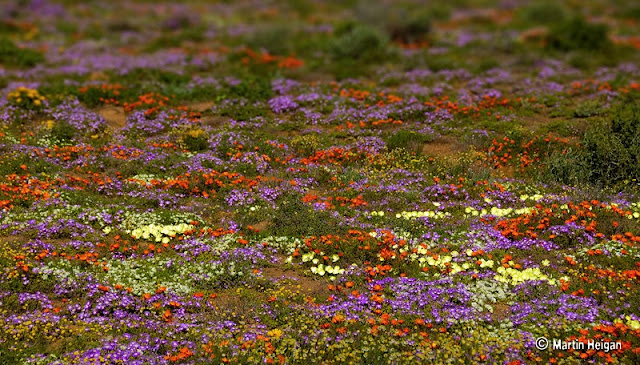“We believe that changes in biodiversity, either through local extinction or biological invasions, is the single most important and dramatic problem in contemporary ecology,”
reads the mission of the Naeem Lab, led by Professor
Shahid Naeem of Columbia University and editor of
Biodiversity, Ecosystems Functioning, and Human Wellbeing: An Ecological and Economic Perspective. As Naeem told a group of USAID employees last week, this problem is even more important today, because biodiversity is a key factor in determining the resilience of life–and could be an important ally in the fight against the impacts of climate change.
At the talk, Naeem described an experiment funded by the National Science Foundation that tested the effect of carbon dioxide, nitrogen, and diversity of plant species on rates of plant growth. The scientists found both carbon dioxide and nitrogen exposure to increase plant growth, but the impact of biodiversity to be even greater.
In the monoculture trials, exposure to carbon dioxide, nitrogen, and both increased vegetation growth by by 7 percent, 2 percent, and 17 percent, respectively. When the plot was expanded to include 16 species, however, rates of plant growth jumped to 22, 25, and 36 percent.
Real-World Implications
Naeem’s message aligned with an earlier World Bank report, Biodiversity, Climate Change, and Adaptation, which in 2008 noted that “Climate change is already impacting on ecosystems and livelihoods, but enhanced protection and management of biological resources can mitigate these impacts and contribute to solutions.”
The report, which examines the importance of biodiversity to mitigating and adapting to climate change, cites real-world examples, such an analysis of a forest management project in Madagascar that would cost $97 million but generate $150-180 million in revenue from direct payments for conservation activities, ecotourism, and watershed protection.
Another example focuses on a farmer in South Africa’s Bokkeveld Plateau, who 30 years ago switched from cultivating cereals and pasture crops to nurturing indigenous vegetation. “With the diversity of indigenous plants, McGregor was able to maintain productivity for much longer through the dry summer season,” the report says. Further, he was able to eliminate the need for pesticides and increase the productivity of sheep grazing. The flowering of the natural plants attracted tourists to his farm, generating greater income for both himself and his district, and has since become South Africa’s ninth botanical garden.
Bringing Science to Bear on Policy
Still, Naeem said that although the scientific evidence connecting biodiversity, resilience, and adaptation has long been established, it is in large part failing to affect environmental and development policy. Naeem said scientists have completed their leg of the race but aren’t able to reach the policymakers who need to carry-on the baton. Along the chain connecting research and policy-making the message becomes lost or diluted.
“How do we translate the science?” Naeem asked the USAID practitioners in the audience. The knowledge of biodiversity’s important role in climate adaptation is available, but how can scientists ensure that it impacts policy? Members of the audience cited both Congressional funding mandates and departmental silos as significant barriers to efforts to address the link between biodiversity and adaptation.
One promising avenue could be programs that already work across departmental silos to integrate environment and health initiatives in areas of the world with high biodiversity. These population-health-environment (PHE) programs, which seek to preserve biodiversity while improving community livelihoods and human health, could be effective mechanisms for exploring the contribution of biodiversity to climate adaptation.
Photo credit: Wildflowers bloom in Namaqualand, South Africa, courtesy Flickr user Martin Heigan. Near the Bokkeveld Plateau, the wildflowers in the two regions are resilient to changes in rainfall and temperature patterns and each year attract tourists from all over the globe.
 A Publication of the Stimson Center.
A Publication of the Stimson Center.




